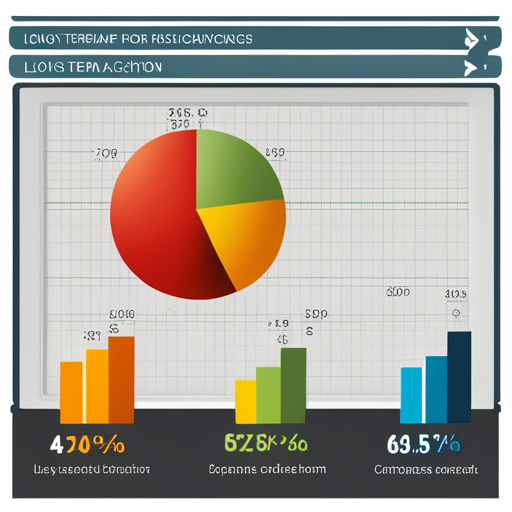#Risktolerance
Explore tagged Tumblr posts
Text
Risk Tolerance

Risk tolerance is the maximum amount of loss an investor may endure while choosing an investment. Investors can better plan their entire portfolio and their approach to investing by being aware of their level of risk tolerance. For instance, investments will be made cautiously and will comprise more low-risk and less high-risk investments if a person has a low risk tolerance.
2 notes
·
View notes
Text
Retirement Goals and Risk Tolerance Robo Advisors
Your Retirement Goals and Risk Tolerance and Robo advisors
Define clear retirement goals to guide your investment strategy.
Assess risk tolerance to align investments with your comfort level.
Choose a Robo Advisor that customizes strategies based on your goals and risk tolerance.
Utilize Robo Advisors for features like automated rebalancing and tax-loss harvesting.
Review and adjust your Robo Advisor settings as your goals or risk tolerance change. read more

0 notes
Text
youtube
InvestTalk - 5-19-2023 – What’s the Difference Between Risk Tolerance and Risk Capacity?
You can make smarter judgments about your portfolio by aligning these principles.
0 notes
Video
youtube
Crypto Copy Trading vs. Traditional Trading: Which Is More Profitable?
#CryptoCopyTrading #TraditionalTrading #ProfitabilityComparison #InvestmentStrategy #RiskTolerance #SignalProviders #CopyTraders #Diversification #TimeSaving #HigherReturns #DependenceOnSignalProviders #LackOfControl #FeesAndCommissions #PotentialForLosses #AutonomyAndControl #CustomizedStrategies #UnderstandingTheMarket #LearningCurve #TimeConsuming #HigherRisk #EmotionalChallenges #InvestorGoals #ResearchAndAnalysis #MarketMonitoring #ImpulsiveDecisions #CautionAndDiversification #BingXCryptoExchange #ReferralCode
#youtube#CryptoCopyTrading#traditionaltrading#ProfitabilityComparison#investmentstrategy#investment strategy#risktolerance#signalproviders#copytraders
0 notes
Text
Smart Share Trading: How to Make the Right Moves for Your Money #buyingshares #disciplinedapproach #dollarcostaveraging #financialobjectives #industrytrends #investmentgoals #investmentknowledge #marketvolatility #optimalnumberofshares #portfoliodiversification #risktolerance #sellingshares #sharetrading #timehorizon
#Business#buyingshares#disciplinedapproach#dollarcostaveraging#financialobjectives#industrytrends#investmentgoals#investmentknowledge#marketvolatility#optimalnumberofshares#portfoliodiversification#risktolerance#sellingshares#sharetrading#timehorizon
0 notes
Video
youtube
dogwifhat (WIF) Coin Will Be Listed on BingX Spot: An Exciting Addition to the Cryptocurrency Market
📈 #cryptocurrency #BingXSpot #WIFcoin #tradingpair #investmentrisks #marketvolatility #cryptotrends #risktolerance #officialchannels #complianceandregulations
#youtube#cryptocurrency#bingxspot#bingx#wifcoin#wif#tradingpair#investmentrisks#investment risks#marketvolatility#cryptotrends#crypto trends#risktolerance#risk tolerance#officialchannels#complianceandregulations
0 notes
Text
How to Day Trade Futures l From Zero to $2705
youtube
Day trading futures from a starting point of zero to a profit of $2705 is a challenging endeavor that requires careful planning and discipline. Here's a general outline of the steps to consider:
Education: Begin by immersing yourself in education about the futures market. Understand the basic concepts, such as margin requirements, leverage, and different contract specifications. There are numerous online courses, books, and resources available to help you get started.
Trading Plan: Develop a comprehensive trading plan that outlines your goals, risk tolerance, and specific strategies for entering and exiting trades. Effective risk management, including setting stop-loss orders, is crucial to protect your capital.
Practice: Before risking real money, practice on a demo account. This provides a risk-free environment to test your strategies and build your confidence.
Start Small: When you transition to trading with real capital, begin with a modest amount. As you gain experience and achieve consistent profitability, you can gradually increase your position sizes.
Continuous Learning: Day trading requires ongoing learning. Stay informed about market news, continually improve your technical and fundamental analysis skills, and maintain a trading journal to review your performance and make necessary adjustments.
Discipline: Discipline is a key factor in day trading. Stick to your trading plan and avoid making impulsive decisions based on emotions.
#DayTrading#FuturesTrading#TradingStrategy#RiskManagement#MarginTrading#FinancialEducation#StopLoss#DemoTrading#RiskTolerance#TechnicalAnalysis#Profitability#FinancialMarkets#Youtube
0 notes
Text
4 Tips for Building a Successful Portfolio

Walking through the financial maze of stocks, bonds, and mutual funds can be quite a challenge. American Century Investments offers the following tips to give you the know-how for building a profitable portfolio:

Tip 1: Know Your Goals Consider how much money you'll need for your children's education or your retirement. Whatever your vision for the future might be, set your goals and develop a concrete plan for meeting them. This will help guide your investment decisions and ensure that your portfolio aligns with your long-term objectives. Tip 2: Define Your Investment Time Horizon Your investment time horizon refers to the length of time you have until you need to access the funds in your portfolio. If you're not planning on retiring anytime soon, you might want to have a portfolio that includes more long-term investments. On the other hand, if retirement is just around the corner, consider a more conservative approach to protecting your capital. Tip 3: Determine Your Risk Tolerance Understanding your risk tolerance is crucial to building a successful portfolio. Figure out how comfortable you are with taking risks and compare that with what you can afford. Generally, the longer you have to invest, the more risk you can afford to take. However, it's important to strike a balance between risk and potential returns to ensure the stability and growth of your investments. Tip 4: Consult a Professional To avoid financial pitfalls and make informed investment decisions, it's often wise to seek professional guidance when putting together a portfolio. A certified financial planner or investment advisor can provide valuable insights and help you navigate the complexities of the financial markets. "Recent research shows that investors continue to grapple with some of the most basic investment concepts, suggesting a greater need for financial advice and guidance," said Doug Lockwood, a certified financial planner. To help investors meet their financial goals, American Century Investments has developed On Plan Investing, a program designed to help investors build and maintain diversified investment portfolios at no additional cost. Combining educational tools, advice, market insight, and investment products, On Plan Investing helps investors develop a personal investment strategy, whether they are new to investing, seeking guidance but still wanting control over their investment mix, need help positioning their portfolios with a long-term perspective, or need help understanding how the markets work. Frequently Asked Questions (FAQs) Why is it important to set investment goals?Setting investment goals helps you define your financial objectives and provides a roadmap for your investment decisions. It ensures that your portfolio aligns with your long-term aspirations and helps you stay focused on achieving them.How does risk tolerance affect portfolio construction?Understanding your risk tolerance is crucial to determining the appropriate asset allocation for your portfolio. It helps strike a balance between risk and potential returns, ensuring that your investments align with your comfort level and financial situation.Why is it important to consult a professional when building a portfolio?Consulting a professional, such as a certified financial planner or investment advisor, can provide valuable insights and guidance in navigating the complexities of the financial markets. They can help you make informed investment decisions and avoid common pitfalls.What is on-plan investing?On-Plan Investing is a program developed by American Century Investments to help investors build and maintain diversified investment portfolios. It combines educational tools, advice, market insight, and investment products to assist investors in developing a personalized investment strategy.How can on-plan investing benefit investors?On-Plan Investing provides investors with the resources and support they need to make informed investment decisions. It helps investors stay on track with their financial goals and offers guidance on positioning their portfolios for long-term success. Read the full article
#Diversifiedportfolio#Financialgoals#investmenttips#Long-terminvestments#Portfoliobuilding#Risktolerance
0 notes
Text
10 Easy Steps to Creating a Savings Plan and Investment Portfolio
Creating a solid savings plan and investment portfolio is crucial for achieving financial stability and reaching your long-term goals. By following a step-by-step approach, you can lay a strong foundation for your financial future. In this article, we will walk you through ten essential steps to help you create a savings plan and investment portfolio that aligns with your financial aspirations. Let's get started!
Step 1: Assess Your Financial Goals and Risk Tolerance
Unlock the Secrets of Forex Trading: Discover a Free, Yet Powerful Learning Course at ForexFinanceTips.com To begin, take some time to evaluate your financial goals and understand your risk tolerance. Determine whether you have short-term goals, such as saving for a vacation, or long-term goals, such as retirement or buying a house. Additionally, consider your risk tolerance—the amount of volatility you are comfortable with in your investments. For example, let's say your short-term goal is to save $5,000 for a dream vacation within the next two years, and your long-term goal is to retire comfortably in 25 years. You may also discover that you have a moderate risk tolerance, where you are willing to accept some fluctuations in your investment returns.
Step 2: Evaluate Your Current Financial Situation
Next, evaluate your current financial situation by analyzing your income, expenses, and existing savings. Calculate your monthly income and deduct all necessary expenses, such as rent, bills, and groceries. This will give you a clear picture of your disposable income and potential areas for saving. For instance, suppose you earn $3,000 per month, and your expenses amount to $2,000. After deducting your expenses, you have $1,000 as disposable income. This surplus can be allocated towards your savings and investment goals.
Step 3: Set Realistic Saving and Investment Targets
Learn Python Coding and Django Web Development, 100% Course, Easy to navigate and complete learning road map at dtlpl.com Setting realistic saving and investment targets is crucial for staying focused and motivated. Based on your financial goals and disposable income, establish achievable saving goals. Determine how much you can comfortably save each month and aim to increase this amount over time. Continuing with our example, if you have $1,000 as disposable income, you may decide to save $500 per month towards your vacation goal and allocate the remaining $500 for long-term retirement savings.
Step 4: Research and Educate Yourself on Investment Options
Before making any investment decisions, it is essential to research and educate yourself on different investment options. Understand the various investment vehicles available, such as stocks, bonds, mutual funds, and exchange-traded funds (ETFs). Learn about their risk profiles, potential returns, and suitability for your investment goals and risk tolerance. For instance, suppose you have a moderate risk tolerance and are willing to invest in the stock market for potential long-term growth. You may research and learn about different stocks, analyze their historical performance, and understand the factors that can influence their value.
Step 5: Diversify Your Portfolio
Diversification is key to managing risk and optimizing returns in your investment portfolio. Allocate your investments across different asset classes, such as stocks, bonds, and real estate, to reduce the impact of any single investment's performance on your overall portfolio. For example, instead of investing all your money in a single stock, consider diversifying by investing in multiple stocks across different sectors. This way, if one sector experiences a decline, your overall portfolio won't be as severely affected.
Step 6: Choose the Right Savings and Investment Accounts
If you have a Dog, Cat, Bird, or any Pet at home, The Most Informative Pet Blog NiceFarming.com Selecting the right savings and investment accounts is crucial for maximizing returns and minimizing fees. Choose savings accounts that offer competitive interest rates and low fees. For long-term investments, consider tax-advantaged accounts like Individual Retirement Accounts (IRAs) or employer-sponsored plans like a 401(k). For instance, if you are saving for retirement, contributing to a 401(k) provided by your employer can offer advantages like tax-deferred growth and potential employer-matching contributions.
Step 7: Develop a Savings Plan
Creating a budget and a savings plan is vital for disciplined saving. Identify your monthly expenses and allocate a specific amount towards savings. Automate your savings by setting up automatic transfers from your checking account to your savings account. For example, if your monthly expenses amount to $2,000 and you aim to save $500 per month, allocate $1,500 for expenses and set up an automatic transfer of $500 from your checking account to your savings account each month.
Step 8: Implement Your Investment Strategy
Once you have conducted thorough research and established your investment strategy, it's time to put your plan into action. Make informed investment decisions based on your risk tolerance and the knowledge you have gained. Execute trades, purchase stocks or mutual funds, and start building your investment portfolio. Continuing with our example, suppose you have researched and identified a diversified set of stocks across different sectors that align with your risk tolerance. You can now start investing in those stocks through a brokerage account.
Step 9: Regularly Review and Rebalance Your Portfolio
Regularly reviewing your investment portfolio is essential for ensuring it stays aligned with your goals and risk tolerance. Monitor the performance of your investments and make adjustments if necessary. Rebalance your portfolio by buying or selling investments to maintain the desired asset allocation. For instance, if your stocks have performed exceptionally well and now comprise a larger portion of your portfolio than intended, consider selling some shares to bring your allocation back into balance.
Step 10: Seek Professional Advice if Needed
While you can handle your savings plan and investment portfolio independently, seeking professional advice can provide valuable insights. If you feel overwhelmed or require assistance with complex investment strategies, consider consulting a financial advisor. A financial advisor can provide personalized advice based on your specific circumstances and help you navigate the intricacies of the financial markets.
Frequently Asked Questions
Q1: How much should I save each month? The amount you should save each month depends on your financial goals and disposable income. Start with a reasonable amount that you can comfortably save and aim to increase it over time. Q2: Is it necessary to diversify my investment portfolio? Yes, diversifying your investment portfolio helps manage risk. By spreading your investments across different asset classes, you reduce the impact of poor performance in one investment on your overall portfolio. Q3: When should I seek professional advice? If you feel uncertain about making investment decisions, require guidance on complex strategies, or want personalized advice, it's advisable to consult a financial advisor.
Conclusion of Creating a Savings Plan
Creating a savings plan and investment portfolio is an important step toward securing your financial future. By assessing your goals, evaluating your financial situation, setting targets, and educating yourself about investment options, you can develop a strategy tailored to your needs. Regularly review and adjust your portfolio, and consider seeking professional advice when necessary. Start implementing these steps today, and take control of your financial journey. We hope this article has provided you with valuable insights and guidance. If you have any further questions or would like to share your own experiences, please feel free to leave a comment below. We would love to hear from you and continue the conversation on creating a savings plan and investment portfolio. Read the full article
0 notes
Text
How to Invest Your Money: A 7-Step Investment Plan

Investing your money is a smart way to grow your wealth and achieve financial freedom. However, without a clear plan in place, navigating the world of investments can be overwhelming. That's why we've created a step-by-step investment plan that will help you confidently on How to Invest and also to make good investment decisions. Whether you're a beginner or looking to enhance your investment strategy, this guide is for you. So let's dive in and learn how to invest your money effectively.
Step 1: Define your financial goals
To begin your investment journey, it is crucial to clearly define your financial goals. Consider both short-term and long-term objectives, such as saving for a down payment on a house, funding your child's education, or planning for retirement. By setting specific and measurable goals, you can align your investment strategy accordingly. Additionally, understanding your risk tolerance and investment horizon are vital factors in creating a successful investment plan. Risk tolerance refers to your comfort level with potential fluctuations in the value of your investments, while investment horizon refers to the length of time you can keep your money invested. Assessing both these aspects allows you to select appropriate investment options that are in line with your comfort levels and time frame. Lastly, before diving into investing, it's important to establish a solid foundation. Pay off high-interest debts, such as credit card balances or personal loans, which can hinder your financial progress. Building an emergency fund is equally important, as it acts as a safety net to cover unexpected expenses. By addressing these financial priorities first, you can confidently move forward with your investment plan.
Step 2: Educate yourself about investment options
Before making any investment decisions, it is essential to educate yourself about the various investment options available to you. Research different avenues such as stocks, bonds, mutual funds, real estate, and more. Each investment option carries its own set of risks and potential returns, so understanding them thoroughly is crucial. Learning about investment options can be done through various means. Read books, attend seminars or webinars, follow reputable financial blogs, and subscribe to financial newsletters. Additionally, consider seeking advice from a financial advisor or investment professional who can guide you in selecting the most suitable investment options based on your financial goals and risk tolerance. While educating yourself, be sure to assess the risks associated with each investment option. A basic understanding of factors such as volatility, historical performance, market trends, and economic indicators can help you make informed investment decisions. The more knowledge you acquire, the better equipped you will be to develop a well-rounded investment plan.
Step 3: Create a diversified investment portfolio
One of the fundamental principles of successful investing is diversification. Diversifying your investment portfolio involves spreading your investments across various asset classes, reducing the potential risk associated with any single investment. This strategy helps cushion your portfolio against fluctuations in a particular sector or asset. When creating a diversified portfolio, it is crucial to allocate your investments based on your risk tolerance and financial goals. For instance, if you have a higher risk appetite, you may allocate a larger portion of your portfolio to stocks and equity-based investments. On the other hand, if you have a lower risk tolerance, you may lean towards more stable investments like bonds or fixed-income securities. Consider various factors when diversifying, including stocks, bonds, real estate, and even international investments. Each asset class offers its own benefits and risks, so striking the right balance is crucial. Regularly review and rebalance your portfolio to ensure it remains aligned with your investment goals, adjusting your asset allocation as needed. Remember, diversification does not guarantee profits or protect against losses, but it is an important risk management strategy that can enhance the stability of your investment portfolio.
Step 4: Open an investment account
Once you have educated yourself about investment options and created a diversified investment portfolio, it's time to open an investment account. Here are the steps to follow: - Research and choose a reputable brokerage firm or investment platform: Look for a brokerage firm or investment platform that aligns with your investment goals, offers the investment options you are interested in, and has a good reputation in the industry. Consider factors such as fees, account types, customer service, and investment product availability. - Evaluate fees: Compare the fees charged by different brokerage firms or investment platforms. These may include account maintenance fees, transaction fees, commissions, and expense ratios for mutual funds or exchange-traded funds (ETFs). Choose a provider that offers competitive fees and aligns with your budget. - Consider account types: Determine the type of investment account that suits your needs. Common types include individual brokerage accounts, individual retirement accounts (IRAs), Roth IRAs, or employer-sponsored retirement accounts such as 401(k)s. Each account type has different tax implications and contribution limits, so choose the one that aligns with your financial goals and tax strategy. - Check customer service: Consider the level of customer service offered by the brokerage firm or investment platform. Look for a provider that is responsive, provides educational resources, and offers support when needed. Good customer service can make a significant difference, especially if you require assistance with your investments. - Ensure investment product availability: Ensure that the brokerage firm or investment platform offers the investment products you are interested in. This could include stocks, bonds, mutual funds, ETFs, real estate investment trusts (REITs), or other specific investment vehicles. Having access to a wide range of investment options allows you to diversify your portfolio effectively. - Open an account: Once you have chosen a brokerage firm or investment platform, follow their account opening process. This typically involves providing personal information, such as your name, address, social security number, and employment details. You may also need to provide funding for your account, which can be done through a bank transfer or other accepted methods. - Ensure alignment with your investment goals: Before finalizing the account opening, ensure that the account aligns with your investment goals and risk tolerance. Some brokerage firms or platforms offer questionnaires or assessments to help determine your risk profile and suggest suitable investment options.
Step 5: Start investing
After opening your investment account, it's time to start investing. Here's how you can begin: - Determine the investment amount based on your financial situation: Assess your financial situation, including your income, expenses, and savings. Determine an amount that you can comfortably invest without compromising your essential needs and emergency fund. Consider setting aside a specific portion of your income for investments on a regular basis. - Begin with a systematic investment plan (SIP) for mutual funds or regular contributions: If you are investing in mutual funds, consider starting with a systematic investment plan (SIP). A SIP allows you to invest a fixed amount regularly (e.g., monthly) in a mutual fund of your choice. This approach helps you take advantage of rupee cost averaging and avoids the need for timing the market. - Keep investing regularly to benefit from the power of compounding: Consistency is key when it comes to investing. Aim to invest regularly, whether it's through SIPs, automatic contributions, or manually adding funds to your investment account. By investing consistently over time, you can benefit from the power of compounding, which can significantly grow your wealth in the long run. - Consider dollar-cost averaging: Dollar-cost averaging is an investment strategy where you invest a fixed amount at regular intervals, regardless of the current market price. This approach helps you mitigate the impact of market volatility and reduce the risk of making poor investment decisions based on short-term market fluctuations. - Rebalance your portfolio: As you continue investing, periodically review your investment portfolio and rebalance it if necessary. Rebalancing involves adjusting the asset allocation to maintain the desired risk-return profile. For example, if certain investments have performed exceptionally well and now form a larger portion of your portfolio, you may need to sell some of those investments and redistribute the funds across other asset classes.
Step 6: Monitor and review your investments
To ensure your investment plan remains on track, it's important to regularly monitor and review your investments. Here's how you can do that: - Track your portfolio's performance: Use the tools and resources provided by your brokerage firm or investment platform to track the performance of your investments. Monitor the returns, compare them to relevant benchmarks, and assess whether your portfolio is meeting your financial goals. - Periodically review progress towards your goals: Regularly review how your investments are progressing towards your financial goals. Are you on track to meet your short-term and long-term objectives? If necessary, adjust your investment strategy or contributions to align with any changes in your goals or circumstances. - Make adjustments as required: Market conditions and personal circumstances can change over time. Stay informed about market news, economic trends, and investment strategies. If needed, make adjustments to your investment portfolio. This could involve rebalancing your asset allocation, diversifying further, or reallocating funds to take advantage of new opportunities or manage risks. - Seek professional advice when needed: If you are uncertain about certain investment decisions or need guidance, consider seeking advice from a financial advisor or investment professional. They can provide personalized recommendations based on your financial situation, goals, and risk tolerance.
Step 7: Stay disciplined and seek long-term growth
To maximize the benefits of your investment plan, it's important to stay disciplined and maintain a long-term perspective. Here's what you can do: - Avoid making impulsive investment decisions: Avoid making investment decisions based solely on short-term market fluctuations or emotions. Stay focused on your long-term goals and investment strategy. Making impulsive decisions can lead to poor outcomes and hinder your progress toward financial success. - Stick to your investment plan: Stay committed to your investment plan even during periods of market volatility or economic uncertainty. Maintain consistency in your investment contributions and asset allocation unless there are legitimate reasons to adjust them. Avoid trying to time the market or chase short-term trends. - Remain patient: Investing is a long-term journey that requires patience. Keep in mind that investments can experience ups and downs over time. Avoid reacting to short-term market fluctuations and stay focused on your long-term financial goals. Patience can be rewarded with the potential for higher returns and wealth accumulation. - Continually educate yourself: The investment landscape and market conditions can evolve over time. Continually educate yourself about investments, market trends, and new investment opportunities. Read books, follow financial news, attend webinars or seminars, and engage with reputable financial blogs or newsletters. Enhancing your understanding of investments will empower you to make informed decisions and adapt to changing circumstances.
Conclusion:
By following this step-by-step investment plan, you can confidently navigate the world of investments and work towards achieving your financial goals. Remember to define your goals, educate yourself about investment options, create a diversified portfolio, open an investment account, start investing regularly, monitor your investments, stay disciplined, and seek long-term growth. With patience, perseverance, and the right knowledge, you can set yourself on the path to financial success. Start investing today and secure your financial future.
Looking to take your personal finance journey even further?
Check out "The Mental Time Travel System," an extraordinary program. Drawing upon decades of experience in hypnosis and metaphysics, as well as cutting-edge concepts like Brief Therapy and Narrative Psychology, this system goes beyond anything you've ever encountered before. Through profound insights and effective methods, "The Mental Time Travel System" unlocks the secrets of the Universe, offering you the tools to manifest anything you desire, including "The Big 3." If you're ready to take your manifestations to new heights and create a life of abundance and fulfillment, this program is a must-have resource. Please note that by using the affiliate link provided, you support our website at no additional cost to you. Take the next step on your personal development journey and explore "The Mental Time Travel System" today! Disclaimer: We may receive a commission for purchases made through this affiliate link. I hope this blog has inspired you to learn more about public speaking and to consider giving it a try Are you ready to take your life to the next level? If you’re looking for ways to improve your happiness, productivity, relationships, or overall well-being, then you need to check out our self-help and self-improvement blog. We’ve got articles on everything from breaking bad habits to setting and achieving your goals. We’ll also help you find your purpose in life and learn how to live a more mindful and intentional life. So what are you waiting for? Start reading the PERSONAL GROWTH and WEALTH BUILDING categories today and see how you can transform your life! Read the full article
#assetallocation#brokeragefirm#compounding#diversifiedportfolio#dollar-costaveraging#financialgoals#financialsuccess.#investment#investmentaccount#investmenthorizon#investmentoptions#investmentplan#long-termperspective#patience#portfoliomonitoring#rebalancing#risktolerance#systematicinvestmentplan
0 notes
Link
#volatility adjustment#PositionSizing#RiskManagement#TradingStrategy#CapitalPreservation#StopLossOrders#PortfolioManagement#TradingPerformance#RiskTolerance#CapitalAllocation
1 note
·
View note
Text
Asset Allocation: A Comprehensive Guide to Building
Asset Allocation:Introduction

The article starts by introducing the idea of asset allocation and describes its importance in handling and expanding an investment portfolio. It highlights the value of a balanced portfolio in reducing risks and increasing returns and also gives an outline of the article's layout and topics.
I. Understanding

A. First, the article talks about what Asset reallocation is and its main ideas. B. Next, it looks into how risk tolerance affects Investment asset mix C. Lastly, the article studies how investment time affects asset allocation choices. Here, the complexity of the wording is simplified for easier understanding.
II. Diversification: The Key to Successful Portfolio adjustment

A. Then, it dives into diversification and its advantages. B. Also, the article examines diversifying portfolios among different asset classes. C. Lastly, it talks about diversifying within asset classes. In this revision, the wording is more straightforward and easier to understand.
III. Strategic Asset Allocation: Planning for the Long Term

A. Initially, the text underscores the importance of financial goals and objectives B. Following this, it examines the role of rebalancing in strategic C. Lastly, it explores the impact of economic and market conditions on strategic Portfolio adjustment decisions.
IV. Tactical Asset distribution: Capitalizing on Market Opportunities

A. Afterward, the definition and approach of tactical asset allocation are presented. B. In addition, the article evaluates market opportunities and trends for tactical C. Conclusively, it discusses balancing strategic and tactical
V. Implementing in Your Investment Portfolio

A. To start with, the article describes how to select appropriate investments for each asset class. B. Moreover, it considers utilizing asset allocation tools and resources. C. In the end, it reviews monitoring and reassessing
Conclusion:

In summary, the article provides a comprehensive and practical guide to mastering and building a balanced investment portfolio. While gaining a comprehensive understanding of the fundamental principles , readers consequently appreciate its importance in minimizing risks and optimizing returns. As a result, they acquire essential insights for effectively diversifying their portfolios. In doing so, they familiarize themselves with various strategies, including, but not limited to, strategic and tactical

throughout the article. The text also covers planning and adjusting asset allocation according to financial goals, risk tolerance, and investment time horizon. Lastly, the implementation of Asset reallocation techniques and the use of helpful tools and resources are discussed. Asset reallocation

The conclusion encourages readers to incorporate these principles and practices into their investment journey, to build a more resilient and balanced portfolio. It also highlights the potential for long-term growth and financial success. Ultimately,

when needed, reaching out to professional financial advisors may further enhance one's ability to navigate the world of investing and make informed decisions. asset allocation strategies "Gain deeper insights and data on market analysis." Read the full article
#Assetallocation#Assetdistribution#InvestmentassetmixAssetreallocation#Portfolioadjustment#Risktolerance
0 notes
Text
youtube
InvestTalk Classroom: Understand Your Risk Tolerance #shorts
Understanding your risk tolerance is the first step towards becoming an excellent investor. Many factors, including age, personality, the state of the market, and more, affect your risk tolerance.
0 notes
Text
Index Funds vs. Managed Funds: Which Is Right for You?
“Index funds vs. managed funds: which investment strategy is right for me?” This is a question that many investors, from beginners to seasoned professionals, find themselves asking. In this comprehensive guide, we’ll delve into the characteristics, benefits, and drawbacks of both types of funds, providing you with the information you need to make an informed decision. Understanding Index…

View On WordPress
#ActiveInvesting#AssetAllocation#FinancialGoals#FinancialPlanning#IndexFunds#investing#InvestmentCosts#ManagedFunds#PassiveInvesting#RiskTolerance
0 notes
Text
Unlock Your Financial Future: Goals, Risk & Smart Investments!
Unlock financial freedom! We explore understanding your financial goals and risk tolerance. Learn how high-yield savings accounts offer safety versus the S&P’s higher returns. Discover long-term commitment strategies to weather market fluctuations and achieve your dreams! #FinancialGoals #RiskTolerance #InvestingTips #SavingsAccounts #SP500 #WealthBuilding #FinancialPlanning #MoneyManagement…
0 notes